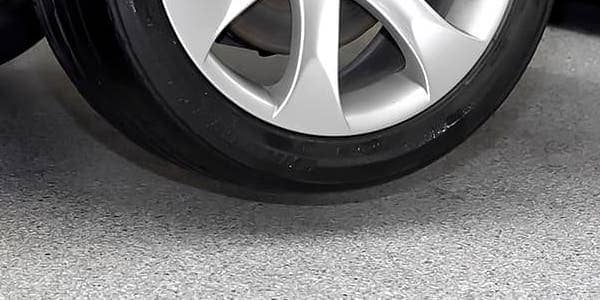So, what is a garage? Defined by Merrian-Webster; it’s a shelter or repair shop for automotive vehicles. Sounds simple, right? A place to put your car. But nothing says a garage must have that stained, grey, cracked and/or damaged cement floor that is all too common. Sometimes a homeowner may be satisfied with the area as it is. Perhaps they have other priorities. But if one were looking to kick it up a notch, there are multiple ways to finish your garage floor and turn that lifeless cement base into a durable showroom surface.
Steve Jobs once said, “I sat in a garage and invented the future.” Clearly, he took his garage seriously. And as we in the surface prep industry also take our flooring seriously, not every option will be covered here. Only the best. And by “the best” we’re talking about the most durable, stain-resistant, longest-lasting surface available; that being a polyaspartic polymer, such as Key Resin’s #470 Polyaspartic Coating and Laticrete’s Spartacote Flex XPL lineup. For durability and longevity are the apex attributes when it comes to driving a vehicle on a prepared surface. And finishing a garage floor is something that you only want to do once. The key is to just get it right the first time.
Like epoxy and polyurethane, polyaspartic is a two-part polymer that requires mixing a separate hardener/catalyst into a base material, or resin. But that is where the similarities end. First of all, polyaspartic is UV-stable, and unlike its epoxy cousins, will not yellow and fade (polymer breakdown) with exposure to sunlight and UV rays. As far as installation time is concerned, polyaspartic only takes a single day above 40 degrees to install, and mere hours to cure, which is remarkable compared to other polymers that can take up to a week to put in and are restricted to a much narrower temperature window. And as a bonus benefit, polyaspartic is chemically bonded directly to the concrete, so it can withstand expansion and shrinkage due to changing temperatures, while resisting the hot-tire peel that’s been the bane of epoxies.
So, what’s the catch? In line with getting what you pay for, polyaspartic does cost a bit more than other polymers, but not much. The main hurdle is that the surface needs to be expertly prepared and readied for install, so unless you are an experienced surface prep do-it-yourselfer, you might want to hire a professional. But you might want to do that anyway, because no matter what method you choose, finishing a garage correctly is an involved and time-consuming process.
When all is said and done, choosing polyaspartic garage floors means that you are reaping the benefits from decades of R&D, and if you do your floor right the first time, the finished product can last dozens of years instead of flaking and peeling after only a few. Basically, it’s a long-term option, rather than a quick fix. Whether you are fashioning a kid’s play space, building the man/she cave extraordinaire, or looking for an epic shine to highlight your worthy vehicles, polyaspartic is the premium choice. And as George “Papa Bear” Halas of NFL fame once pointed out, “Nobody who ever gave his best regretted it.”
